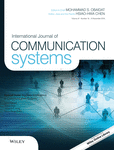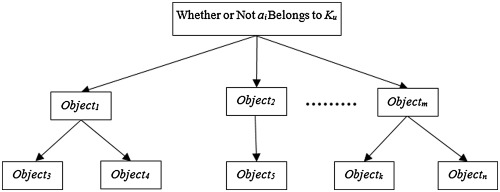Journal list menu
Export Citations
Download PDFs
ISSUE INFORMATION
EDITORIAL
Special issue on big data intelligence in communication systems
- First Published: 09 September 2018
SPECIAL ISSUE ARTICLES
Design and modeling of survivable network planning for software-defined data center networks in smart city
- First Published: 16 January 2018
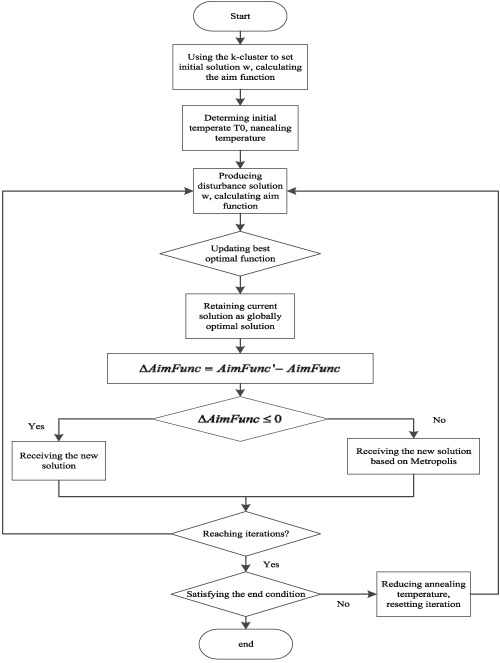
- We present a survivable network planning model based on SDN
- The elastic network planning problem is formulated as a mixed ILP problem to minimize the number of unprotected nodes
- Three effective schemes including K-means clustering algorithm based on simulated annealing, greedy routing algorithm, and Lagrangian relaxation algorithm are proposed for feasible solutions.
Analysis of instantaneous availability of communication system based on the influence of support equipment
- First Published: 18 December 2017
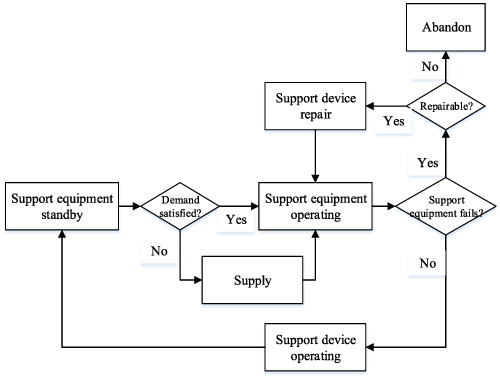
An instantaneous availability model based on the working process of support equipment is proposed. Considering support equipment failure and maintenance queuing, the analytic solution of instantaneous availability is obtained. The validity of the proposed model is illustrated, and the effects of the support equipment failure rate and repair rate on system availability are analyzed through simulation.
An intelligent efficient scheduling algorithm for big data in communication systems
- First Published: 20 November 2017
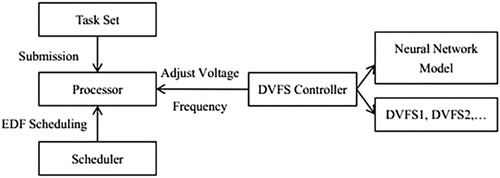
In this paper, we propose a reinforcement learning-based intelligent scheduling algorithm for big data analysis by increasing the utilization and reducing the energy consumption of the processors. Specially, we design a reinforcement learning model to select an appropriate dynamic voltage and frequency scaling technique for configuring the voltage and frequency.
Knowledge fusion based on the group argumentation theory in Web 2.0 environment
- First Published: 10 November 2017
Research on the dynamic effect of the intelligent urban experience to the tourists' two-way internet word-of-mouth
- First Published: 19 November 2017
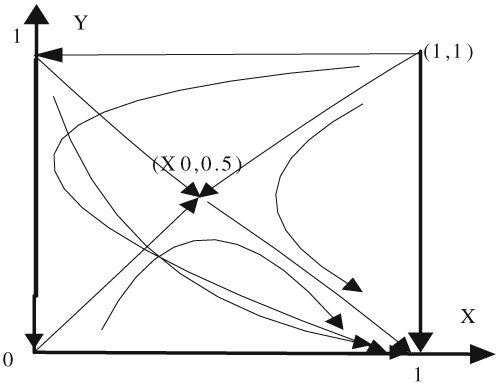
This paper studied the relationship between enterprises and tourism enterprises from Gu networking in the process of investigation, and the relationship among negative word-of-mouth users. In-depth research and analysis are also done on the users through the dynamic relationship between evolutionary game theory and tourism scene experience.
An effective copyright-protected content delivery scheme for P2P file sharing networks
- First Published: 08 January 2018
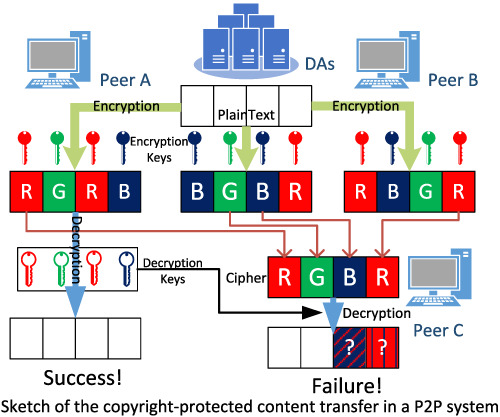
The paper presents a novel piece-level stochastic-encryption–based digital rights management approach and increases the key space by exploring the random characteristic of peer-to-peer networks, which can defend against collusion attacks. It also proposes a copyright-protected content delivery scheme that can keep the efficiency of peer-to-peer networks and protect users' interests from download failure.
Automatic fast double KNN classification algorithm based on ACC and hierarchical clustering for big data
- First Published: 03 January 2018
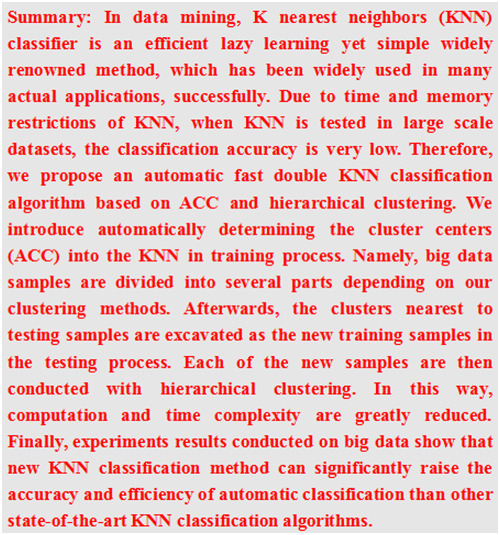
This paper proposes an automatic fast double KNN classification algorithm on the basis of automatically determining the cluster centers and hierarchical clustering. We introduce automatically determining the cluster centers into the KNN in training process. Afterwards, the clusters nearest to testing samples are excavated as the new training samples in the testing process. Each of the new samples is then conducted with hierarchical clustering. In this way, computation and time complexity are greatly reduced.
Modified pyramid dual tree direction filter-based image denoising via curvature scale and nonlocal mean multigrade remnant filter
- First Published: 12 December 2017
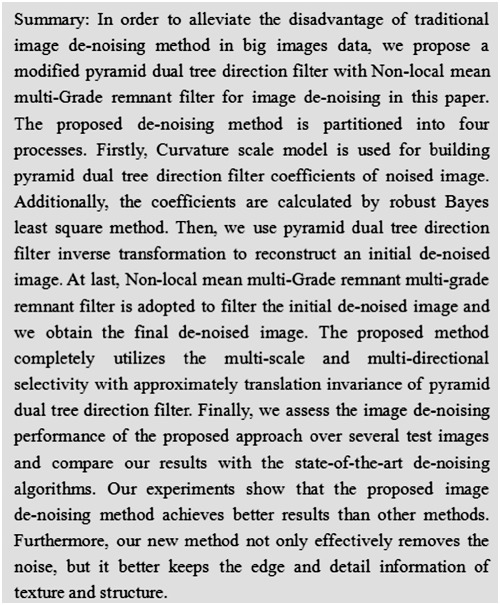
We propose a modified pyramid dual tree direction filter for image de-noising in this paper. Curvature-scale model is for building pyramid dual tree direction filter coefficients of noised image. The coefficients are calculated by robust Bayes least square method. We use pyramid dual tree direction filter inverse transformation to reconstruct an initial de-noised image. Finally, nonlocal mean multigrade remnant filter is adopted to filter the initial de-noised image and obtain the final de-noised image.




